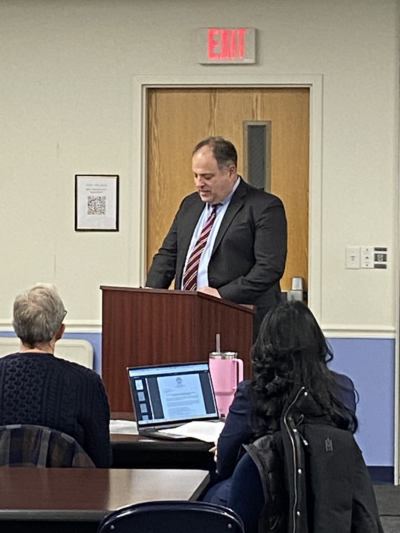
As more affordable housing new construction is proposed throughout Fairfield County, some municipalities have considered filing for a moratorium for such projects under the state’s general statute 8-30g.
At municipalities throughout Connecticut “8-30g” is the subject of many planning and zoning commission hearings as more developers look to build such housing in the wake of a severe housing shortage throughout the state and the country.
New Canaan and Fairfield are the latest towns to ask for moratoriums from the 1989 state law that allows developers to bypass local zoning regulations when building affordable housing in municipalities where the percentage of housing legally deemed affordable is less than 10%. As the municipalities build affordable housing, they earn points that allow them to eventually apply for the moratoriums.
New Canaan’s application was approved by the state Department of Housing in August, which now gives that town the ability to have more control over developers’ affordable housing projects until 2029. The five-year moratorium is actually the second granted to New Canaan by the state. The first one expired in 2021.
Other municipalities that had moratoriums approved include Berlin, Brookfield, Darien, Farmington, Milford, Ridgefield, South Windsor, Suffield, Trumbull, Westport, and Wilton. Those have all expired. The only active moratoriums are in New Canaan and Brookfield, which were granted second moratoriums.
New Canaan First Selectman Dionna Carlson announced at the time the town earned the moratorium in recognition of the number of affordable housing units built in recent years, including the Millport and Canaan Parish apartments.
“New Canaan has worked tirelessly in partnership with the New Canaan Housing Authority to provide affordable housing solutions for our community,” she said in August. “We will continue to identify strategic opportunities to add to our affordable housing stock in an effort to earn future moratoriums and maintain control of local development.”
As for Fairfield, it has filed for a four-year moratorium under 8-30g in December 2024 and awaits the state’s decision, which could come as soon as March. According to First Selectman Bill Gerber, Fairfield’s application has been accepted by the state and is under review, which can take up to 90 days.
“If granted, the town will not have to accept unwanted 8-30g proposals for a period of four years,” Gerber wrote in an open letter to residents last month. “During that period, Fairfield can (and should) leverage greater control over the size and design of developments in order to achieve a subsequent moratorium (which would be for five more years).”
He mentioned that during the 90-day review period developers can continue to file proposals that must be “grandfathered in” for consideration under the 8-30g statute.
One such project that would be grandfathered in after being recently approved by the town Plan and Zoning Commission is a three story 46-unit apartment building with a parking garage at 467 Tunxis Hill Road and 80 Soundview Ave. The owner of the properties – former banker Jeffrey Vangele – wants to turn the $446,500 Tunxis Hill Road and the $496,000 Soundview homes into an investment that could net him millions.
That project was approved by the PZC on Jan. 28 after an earlier hearing that included neighbors concerned about how the project could negatively impact the neighborhood regarding traffic, safety, and flooding. The final vote was 4-3.
The approval was conditional, according to town Planning Director Jim Wendt who addressed PZC members.
“We heard from (town Department of Community Economic Development Director) Mr. (Kevin) Barnhart with respect to the affordability plan,” Wendt said. “He recommended a couple of minor tweaks, which the applicant has agreed to. That includes providing the credentials of the administrator, a slight adjustment to the fair value calculation as well as a color-coded floor plan to distinguish which units are initially offered at 60% and 80% levels.”
Wendt further explained the fair value calculation tweak.
“There was a reported disparity in the sizes of the one-bedroom units by market rate and affordable units,” he said. “We went back in and re-ran those numbers. (Now) the average size for the market rate units is 723 feet and the average size for the affordable rate units is 709. That’s a must shorter gap than was previously reported.”
The breakdown of units for the proposed apartments is 39 one-bedrooms and 7 two-bedrooms. There would be a gym and two floors of parking.
As for the rent, for those tenants making 80% of the area median income (AMI), or a maximum of $70,260, the rent for a one-bedroom would be $1,632. For those making 60% of AMI, or a maximum of $52,695, the rent for a one-bedroom would be $1,193.
For those family tenants making a maximum of $84,312, the rent for a two-bedroom would be $1,958 and for those making up to $63,235, the rent for a two-bedroom would be $1,431.






















